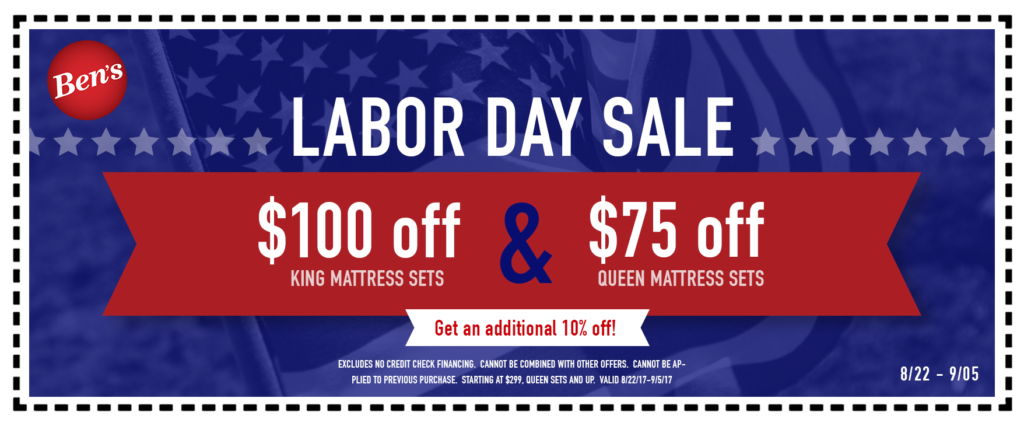Looking for the best mattress for your budget? We’ve got you covered! At Ben’s, we offer a wide range of mattresses in styles and sizes for every bedroom. But without actually lying down on the mattresses, it can be difficult to determine the very best. To guide you in the right direction, we’ve compiled a list of our top 5 mattresses for 2017, based on a close analysis of every mattress we offer, plus sales volume and feedback from customers like you.
Here Are Our Mattress Picks This Year’s Savings:
-
Heritage
Our Heritage Mattress is a great option for those who want an affordable mattress without sacrificing comfort. It’s eco-friendly, because it’s remanufactured, which means that select components have been recycled from other mattresses, thoroughly inspected, sanitized and recovered with new, high-quality materials, including a knit cover and supportive foams. End result: a very comfortable mattress that’s easy on the environment and your wallet!
-
Caress
Our Caress Mattress combines the savings of a remanufactured mattress with the plush softness of a pillow top. The core, including the innerspring system and interior foams, has been meticulously recycled and rebuilt into a fresh new mattress, with new cushioning on top, new knit cover and a new, luxuriously comfortable quilted “V” pillow top. The entire mattress is 12+ inches of cozy goodness, so you can get a great night’s sleep at a bargain price.
-
Leeds
The Leeds is an exceptionally comfortable pillow-top mattress from a brand that’s been around for more than 100 years: Englander. What makes this mattress a winner is its foam-encased, wrapped innerspring coils. The coils are individually wrapped, so they move independently. That helps to give each part of your body the unique support it needs, which helps to relieve pressure points and also prevent mattress motion when your partner turns.
-
Cardiff
Our Cardiff Pillow Top Mattress from Englander is a great pick for any sleeper, but especially those who suffer from lower back pain. That’s because it’s a mattress with a layer of gel-infused memory foam that provides additional support in the lumbar area. This helps to relieve the pressure points that cause you to toss at night or wake up with a stiff back in the morning. The mattress also features a foam-encased alternating coil innerspring, which is a best-in-class design with uniquely conforming support.
-
Rushmore
Rushmore is a luxurious all-foam mattress for those who want a great night’s sleep, combined with the feeling of sleeping on a cloud. The core of this mattress is crafted of High-Density Performance foam, which provides proper spinal alignment and ensures long-lasting comfort. The core is then topped with gel-infused memory foam, as well as other foams, to cradle your body and provide superior pressure-point relief. End result: less tossing and turning, so you can enjoy the deep, restful sleep your body needs.






